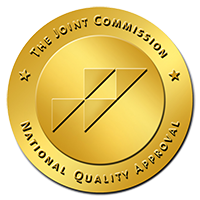Anterior Hip Replacement: less pain, faster recovery, improved mobility

Greater Nebraska Medical & Surgical Services Orthopedic and Sports Medicine specialist Dr. Bryan Bomberg is a big fan of Anterior Hip Replacements when all else fails in providing hip pain relief for patients. “When you’ve tried exercises, anti-inflammatory and other things and you’re still having significant pain and limitation in your activities, then hip replacement is the next course,” he said. A hip replacement basically involves replacing the ball and socket type joint with a prosthesis that goes into the femur (thigh bone) with a new ball (usually a ceramic head). On the cup side, it’s replaced with a titanium cup and polyethylene liner that allows the ball to smoothly rotate as the person moves in various ways. “So the new hip has a brand new joint surface to it that has very little friction, produces no pain and has excellent motion,” Dr. Bomberg said.
There are several ways of replacing the hip joint. “The traditional and most common is usually a posterior approach, on the buttock side,” he said. “That goes through a lot of muscle, causing damage that requires more time to heal. The newer technique is an anterior hip approach where the surgeon goes through the front side. We don’t have to damage the muscle like we do coming from the back when we split the gluteus muscle. By going in from the front, the surgeon is able to go between the muscles, therefore producing less muscle damage. Also we are able to make smaller incisions much closer to the joints. That results in a quicker rehabilitation because we don’t have to protect the muscle after surgery.”
How is the recovery better? “Usually my patients will get up out of bed on the day of surgery and are going home the next day, making for a much shorter, abbreviated hospital stay,” he said. In comparison, patients receiving a posterior hip replacement most often stay up to three days in the hospital setting. “The reason that I find it to be advantageous is the early recovery is easier, with the patient needing a walker or crutches less; you can put full weight on the hip more comfortably and resume your normal activities much quicker,” Dr. Bomberg explained. “In the long run, you recover from either approach; but going in anteriorly, you recover from the operation’s initial effect much easier, which is of course the hard part of the whole recovery process for the patient.”
So why did orthopedic surgeons not use the anterior approach from the beginning? “Well, it really didn’t start in this country until it was popularized by Dr. Joel Matta after he brought back what he had learned from surgeons in France,” he said. “There have been other pioneers as well. I think it’s been about eight to 10 years since it really started to catch on. There are a lot of surgeons that don’t favor it because it’s technically a more difficult approach for the surgeon, and requires a lot of specialized training to learn to do it. As for me, now that I’ve been doing it so long I can’t imagine using any other approach.”
Dr. Bomberg began performing anterior hip replacements eight years ago. “I do about 100 to 200 a year,” he reported. Since Dr. Bomberg starting coming to GNMSS two years ago, he has performed almost 100 hip surgeries in the operating rooms (OR) of Box Butte General Hospital (BBGH).
What are his coworkers saying about Dr. Bomberg? BBGH Certified Registered Nurse Anesthetist Rita Vaughn, CRNA, has worked with several dozen orthopedic surgeons at other facilities in her 30 plus years of anesthesia practice. “Dr. Bomberg’s post op X-rays show on the screen in the OR soon after each case is completed and I have been very impressed with the quality of the work that is evident. It’s amazing the difference between pre op images and the post op ones. I am pleased to be able to work with such a good surgeon here at BBGH.”
In addition, the surgeon said he has found that surgical procedure infection rates are less in smaller hospitals than they are nationally. Chief Quality Officer Mary Mockerman confirmed that when commenting for another story recently written about BBGH quality care metrics. “I can comfortably say that we are below the national average for post-op infections, including total hip and knee replacements,” she stated. The national average for post-operative infections is two percent. BBGH is well below that average.
Patients can make appointments with Dr. Bomberg by calling 308.762.7244.
Box Butte General Hospital is an equal opportunity provider and employer.


